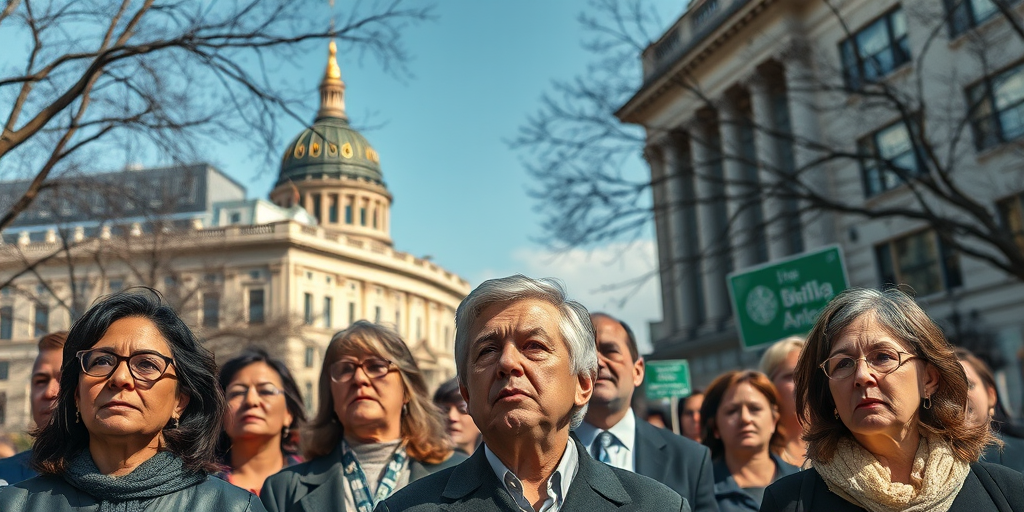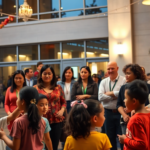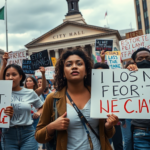### Government Slashes Funding for Environmental Groups Encouraging Diversity
In a controversial move that has raised concerns among environmentalists and advocates for diversity, equity, and inclusion (DEI), the U.S. government has cut $14 million in funding to a number of environmental organizations. These cuts specifically target groups that incorporate DEI into their strategic frameworks.
### Key Points
The Wildlife Society, known for being a critical resource for wildlife professionals and enthusiasts, is among the organizations feeling the impact of these funding cuts. Although this Society has not publicly reported specific cuts, it continues to face the dual challenge of advocating for wildlife conservation while promoting DEI principles, which have become considerably more difficult under current fiscal restraints.
### Context and Background
This funding slash, part of broader budget adjustments under recent federal directives, is particularly notable because some affected groups, like California Trout, Inc., even eliminated DEI language from their websites in response to previous discussions around funding criteria. Despite these efforts, they still faced the rescission of awards they previously believed were secure. The Wildlife Society, which promotes wildlife conservation through various initiatives, has remained firm in its commitment to DEI and has yet to cede to pressures that would compromise those values.
Founded in the early 20th century, The Wildlife Society’s mission is deeply rooted in fostering a future in which humans live comfortably alongside thriving wildlife populations. Its commitment to DEI is central to ensuring that a diverse group of people is involved in conservation efforts, reflecting broader societal values and the need for inclusivity in environmental recovery efforts.
### Local Impact and Community Concerns
For communities dependent on the expertise and advocacy of such organizations, the news is jarring. Many residents in areas like the Rio Grande Valley (RGV) rely on these programs not only for biodiversity conservation but also for educational opportunities that support local careers in environmental science. Jeremy Sanchez, a local conservation officer, argues, “When funding is cut, it affects local jobs and opportunities in areas like ours, where wildlife plays a huge role in our ecosystem and economy.”
One student from the University of Texas Rio Grande Valley expressed concern over potential opportunities lost with decreased support from organizations like The Wildlife Society. “These groups offer internships and educational programs that are crucial for our learning and future careers. We worry about what these cuts mean for our place in wildlife conservation,” stated Maria Lopez, an environmental science major.
### Links to Previous Local Events
The RGV has a history of environmental advocacy, particularly focused on its rich, unique ecosystems. Activism in the region has drawn attention to the Lower Rio Grande Valley’s status as a biodiversity hotspot. Historically, collaborations between local communities and organizations have rescued various species and preserved habitats. Similar funding cuts in the past have jeopardized such projects, leading to public outcry and galvanizing grassroots movements to fight for environmental justice and proper representation.
### Future Implications and Perspectives
With the future of such funding in a precarious position, organizations like The Wildlife Society are expecting to face increasing challenges in maintaining necessary operations and advancing DEI efforts. As these issues unfold, it is imperative for local residents to remain informed and participate actively in advocacy.
Marissa Green, an environmental policy analyst, points out that these events highlight a need for a broader coalition. “We must sustain comprehensive dialogue that involves all voices,” Green insists. “The Wildlife Society and other groups could lead efforts that stress public and private partnerships, leverage research, and rally community support to mitigate these funding gaps.”
### Options for Advocacy and Engagement
Despite these challenges, resources remain available for local stakeholders. The Wildlife Society continues to offer a suite of educational and advocacy tools, such as the Policy Toolkit and Conservation Affairs Network, which can empower both professionals and students to engage critically with ongoing policy changes.
**Residents Interested in staying informed can subscribe to updates** from organizations like The Wildlife Society, which aim to connect community members more closely with issues and events that matter to them.
### Conclusion
As it stands, the financial constraints now imposed on environmental groups underscore a shifting landscape in conservation funding priorities. It amplifies the significance of local impact and community interest in guiding future policies that could determine the trajectory for sometimes fragile ecosystems woven into the fabric of South Texas life.
In the coming months, how these organizations adapt—and how communities respond—will serve as a testament to resilience and the capacity of collective influence in shaping ecological futures that honor diversity, equity, and inclusion.
For further engagement or queries, residents and interested parties can reach out to The Wildlife Society at their Nashville office or through their website, wildlife.org, for updates and opportunities to contribute to ongoing conversations around these vital issues.







